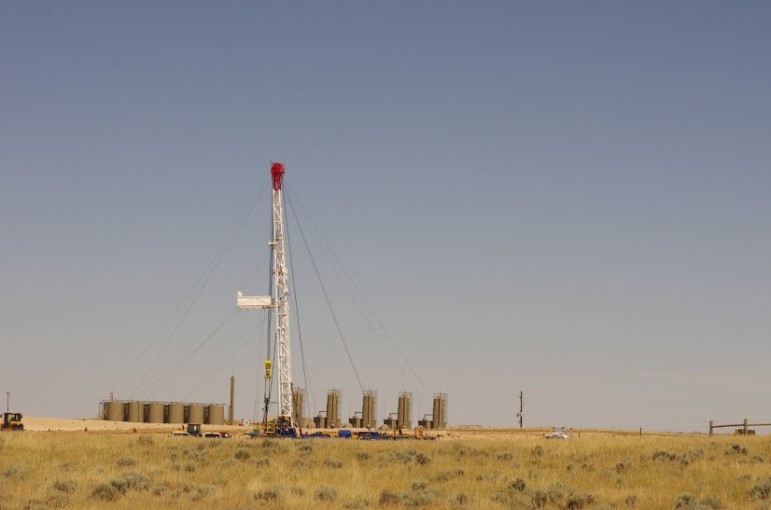
Stephanie Joyce
A drilling rig outside Douglas, Wyo. The U.S. EPA estimated that 29 percent of industrial methane emissions are linked to oil and gas production.
The Environmental Defense Fund released a report this week on the growing industry of detecting and reducing methane emissions. As drilling companies look to natural gas as a cleaner alternative to coal, its main component, methane, is a cause for concern. Methane mitigation companies are turning this concern into profit and jobs.
EDF reported:
Unburned natural gas is primarily methane, both a powerful greenhouse gas and a valuable product. Many companies have effectively developed technologies and services that capture these emissions from oil and gas systems, according to the Datu report. Increased use of these available solutions can create new, well-paying American jobs for skilled workers, save industry over $1 billion in lost product and reduce air pollution.
The study looked at 76 firms across 46 states that manufacture equipment to detect methane leaks and offer related services. Although some are large firms employing tens of thousands of people, more than half of these companies employ 500 or less people and qualify as small businesses. They offer a median hourly wage of more than $30 per hour, exceeding the national average, according to SNL Financial.
The majority of these firms are located in states where oil and gas production is on the rise, including Colorado, Texas, Oklahoma and Pennsylvania. The U.S. EPA estimated that 29 percent of industrial methane emissions are linked to oil and gas production, and there is still work to be done when it comes to regulation. EDF Reported:
Greater state and federal oversight is needed to limit methane emissions from the oil and gas sector. Colorado adopted the nation’s first air pollution rules that require oil and gas companies to control both emissions of methane and smog-forming VOCs (volatile organic compounds). The rules, supported by energy companies and environmentalists, reduce nearly 200,000 tons of methane and VOCs each year—equal to the amount produced by all the cars and trucks in Colorado. Colorado’s rules are a model for smart policy with clear economic, environmental and health benefits.
While this side effect of drilling for natural gas industry is creating jobs, the industry has its dark side, as IE investigated in the Dark Side of the Boom series. Just last week, a worker in a Wyoming natural gas facility died.
There is also growing doubt that natural gas is the answer to a greener planet.
What’s next:
- Read the full report conducted by Datu Research.
- Check out EDF’s interactive map of the emerging methane mitigation industry.
- Check out the EDF and Google Earth interactive maps of natural gas leaks in Boston, Indianapolis and Staten Island.







